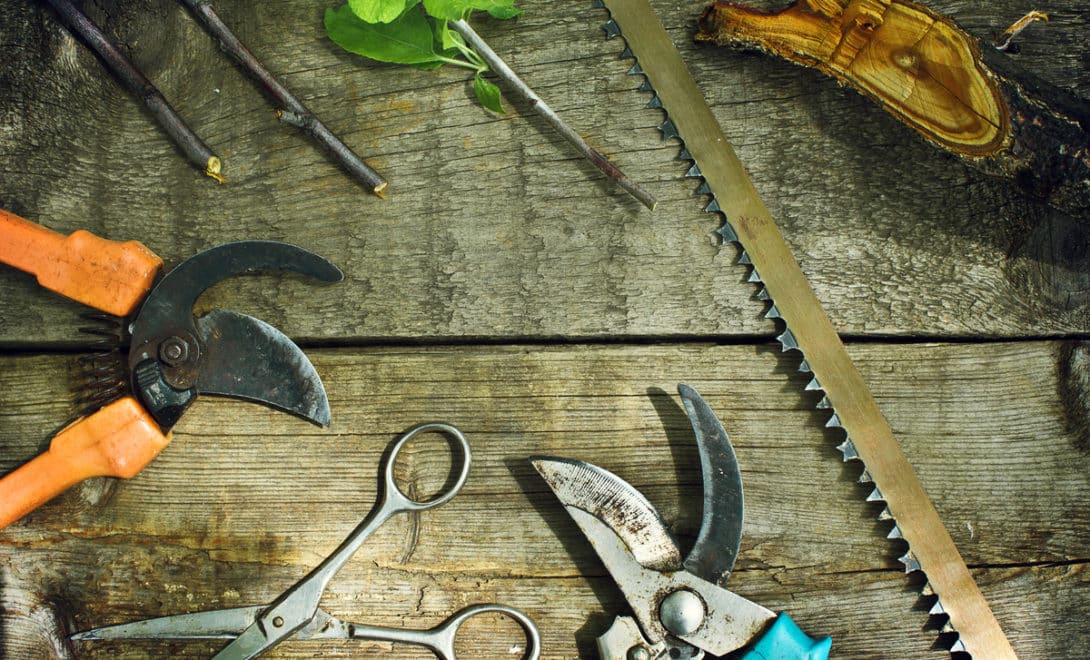You can divide gardening into two stages. The first usually begins around January when gardening catalogs start to arrive in the mail. This stage is the easiest part as it involves browsing the catalogs while sitting in your favorite chair. During this time you get to either dream about what you are going to do this spring, or actually, draft up a list.
The second stage of gardening during winter involves getting out in the yard and doing the work.
But it’s freezing!
Winter is a good time to do some pruning if the temperatures are around 50 degrees or 60. If it is bitter cold, you would be better off waiting for a good day. Pruning when it is considerably below freezing might do more harm than good. The reason is that the wood is brittle and will shatter when you make a cut.
Pruning during winter has its advantages
One of the main advantages of pruning during the winter is less foliage. At least that is true with deciduous plants. You can see clearly what should stay and what you need to cut out. The other advantage is that the plants are dormant, and will not mind you doing a little work on them.
Remove Competing branches
Ornamental trees such as weeping cherries, flowering crabapples, and dogwoods should be pruned to remove competing branches. These and similar trees have a tendency to send branches in many different directions. It is up to you to decide how you want the plant to look, and then start pruning to achieve that look.
Get inside and inspect
Stick your head inside the tree and see what you can eliminate from there. In a way, this is like looking under the hood of your tree. You will see a lot of small branches that have been starved of sunlight. They are just there and should be pruned out to conserve nutrients. Cut out any branches that are growing toward the center of the tree where they will get little sunlight.
Where two branches are crossing, one of them should be removed. Crossing branches tend to cause damage over time by rubbing against each other. Besides that, removing one of these branches will help open the three up. Once you have gotten the inside of the plant cleaned up, start shaping the outside.
Start shaping the outside
Shaping the outside is easier compared to the inside since it involves less analysis. Just visualize how you want the plant to look using imaginary lines as an outline of the plant. Next, cut off anything that is outside of these imaginary lines. It is also important to only cut the tips of branches that have not yet been filled out. Then the goal is to force the plants to fill out these imaginary lines.
The more you trim them, the fuller they become.
For the most part, plants have two kinds of growth: Lateral and Terminal branches. Each branch has one terminal bud at the very end and many lateral branches along the sides. The terminal buds grow in an outward direction, away from the plant. When left uncut they just keep growing in the same direction. As a result, the plant grows tall and very thin like many of the trees in the woods.
On the hand, If you are looking for a nice and full appearance don’t be afraid to trim your plants. When you cut a branch on a plant, or remove the terminal bud the plant sets new buds just below where you cut. This is a problem for many folks, they just can not bring themselves to prune plants like Japanese Red Maples. Just do it! You will have a beautiful and healthier plant because of it.
Don’t overthink it
Look at the process objectively. If you notice a branch that looks like it is growing too far in the wrong direction, cut it. Plants are very tolerant. The only mistake you can make is not pruning when you need to.

